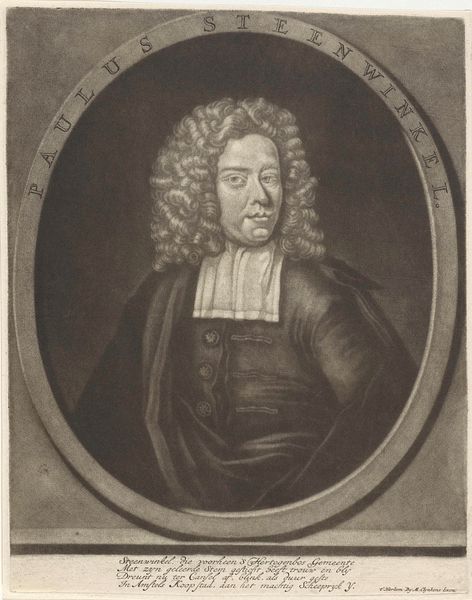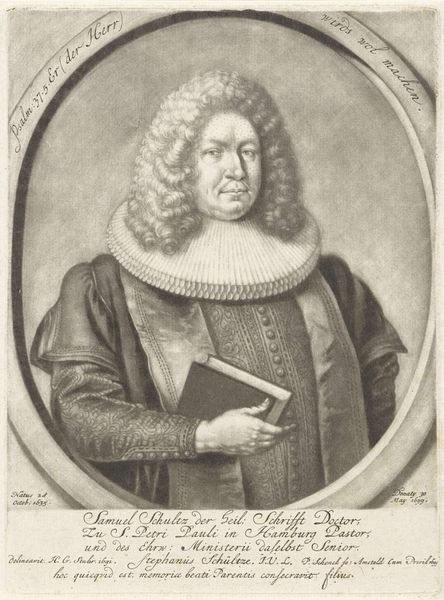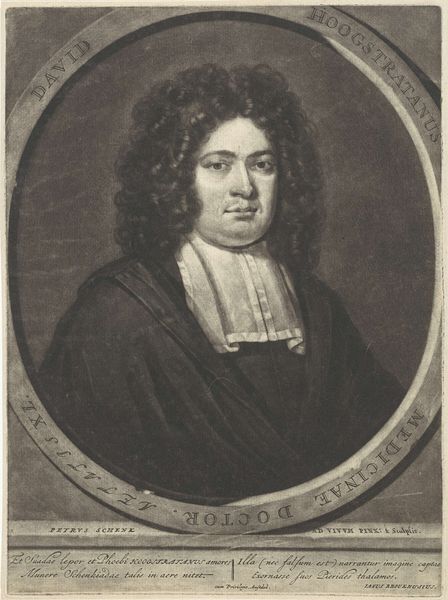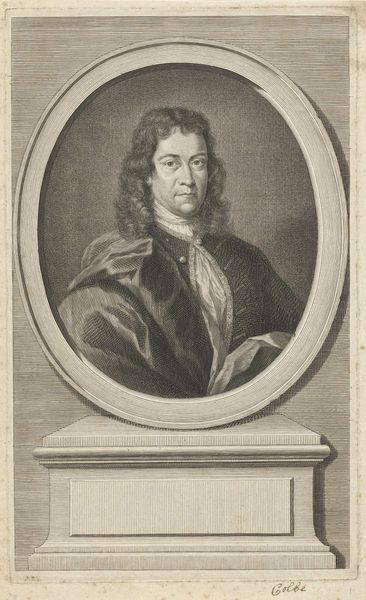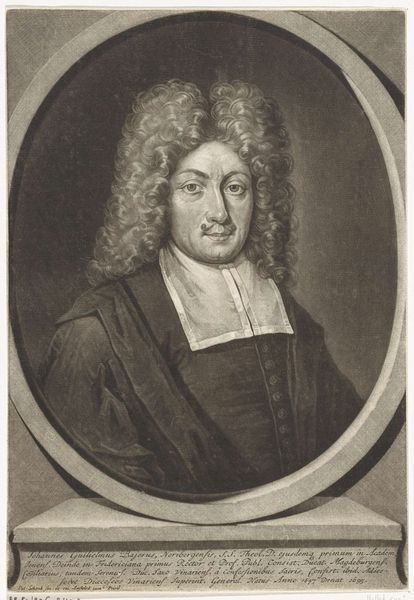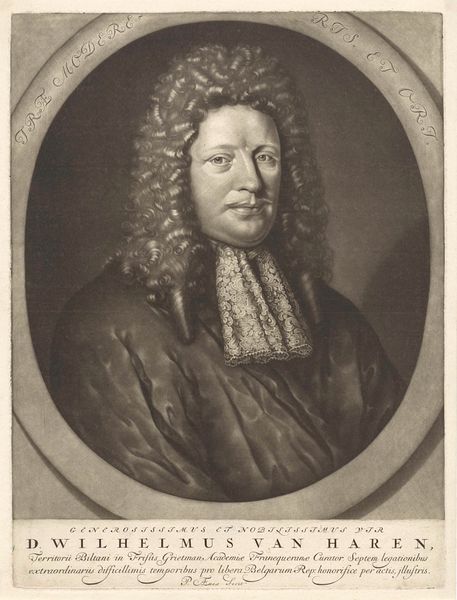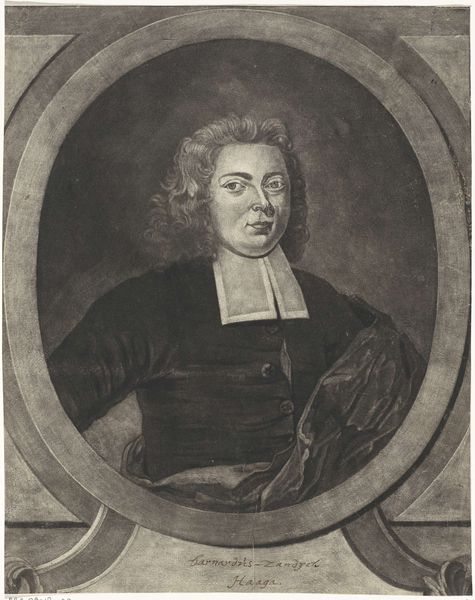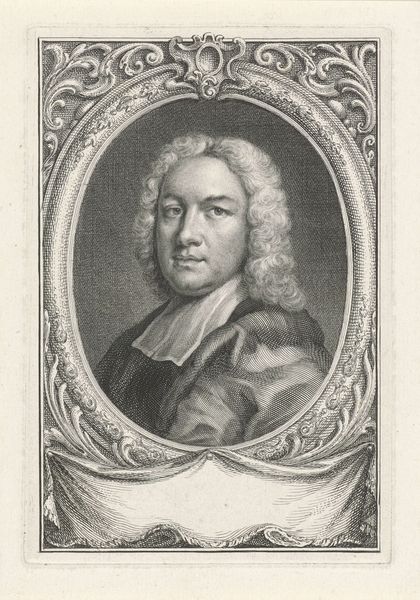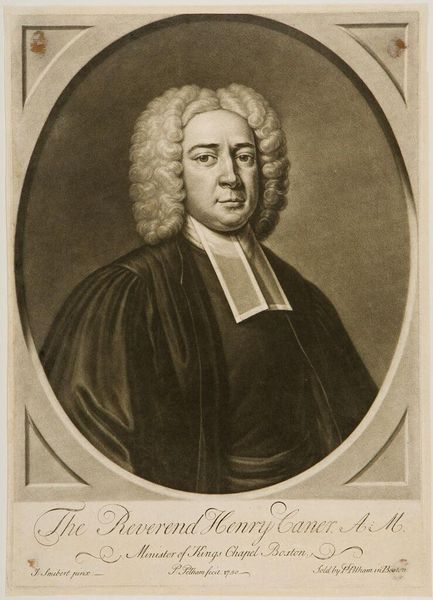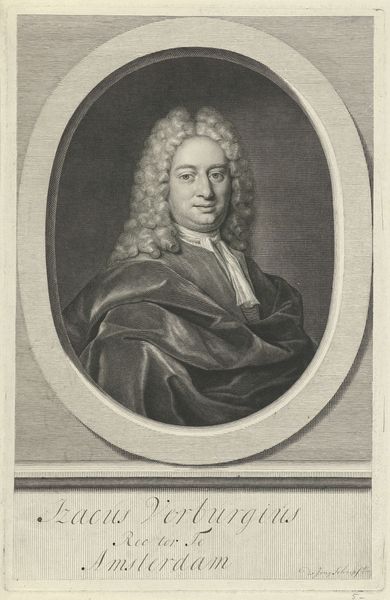
print, engraving
#
portrait
#
baroque
#
dutch-golden-age
# print
#
old engraving style
#
historical photography
#
history-painting
#
engraving
Dimensions: height 262 mm, width 201 mm
Copyright: Rijks Museum: Open Domain
Editor: Here we have a print entitled "Portret van predikant Paulus Steenwinkel" – Portrait of the Preacher Paulus Steenwinkel – made between 1696 and 1727 by Matthijs Pool. The texture almost looks like it's a detailed pencil drawing. What stands out to you when you look at this image? Curator: The symbolic language within portraiture like this is fascinating. Notice the oval frame; it’s a visual container, signifying Steenwinkel's defined role within the community. What does that Latin inscription surrounding the portrait suggest to you? Editor: It’s hard to make out all the words, but "Ecclesiastes Amstelodamensis" seems to indicate his role as a preacher in Amsterdam. So the framing contains his identity and vocation? Curator: Precisely! And the very act of creating a portrait elevates Steenwinkel, inscribing his image into collective memory. Consider how prints like this circulated; they shaped public perception, imbuing him with a certain gravitas and lasting impact. How might the deliberate choice of engraving as a medium play into this? Editor: Well, engravings feel more official and permanent somehow, harder to erase than a drawing, maybe? So the medium reinforces the idea of legacy. Curator: Exactly! It mirrors the enduring power of the Church itself, and how carefully it constructed its image, literally. In this way, the print operates as both art and cultural artifact. Editor: So much meaning embedded within what seems like a simple portrait. I'll never look at an engraving the same way! Curator: Indeed! Each line, carefully etched, speaks volumes about cultural values and enduring legacies.
Comments
No comments
Be the first to comment and join the conversation on the ultimate creative platform.
